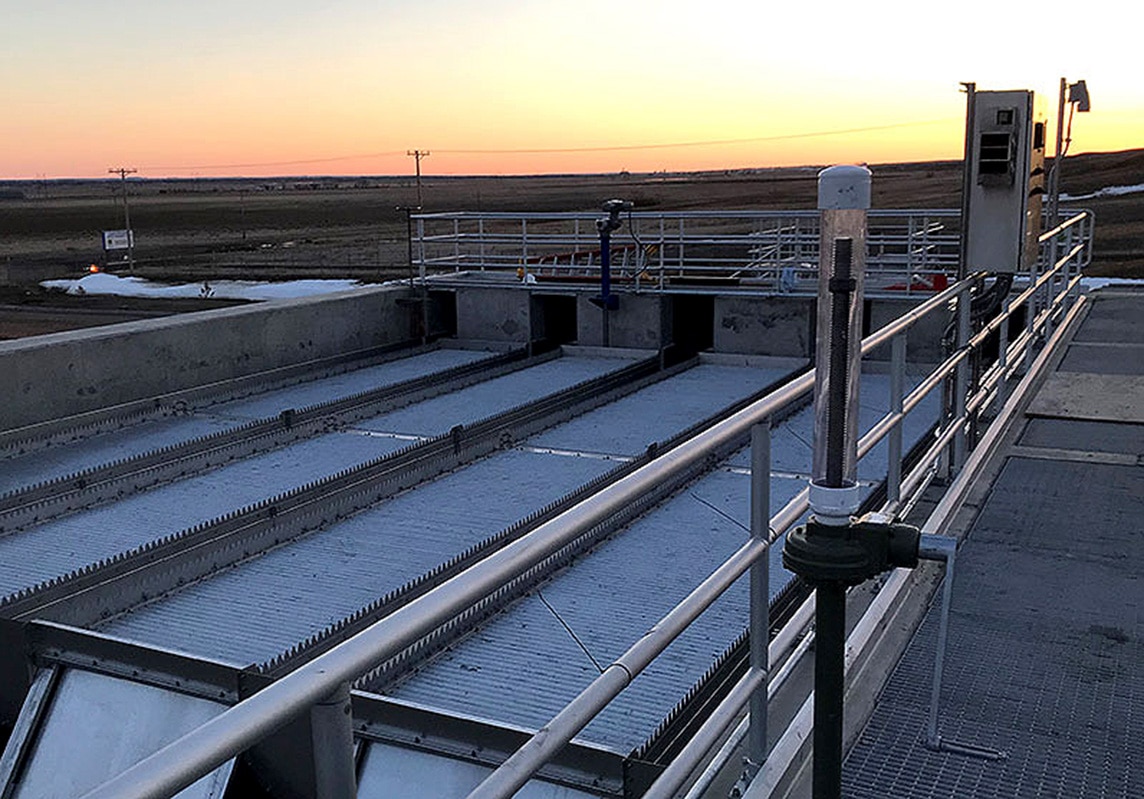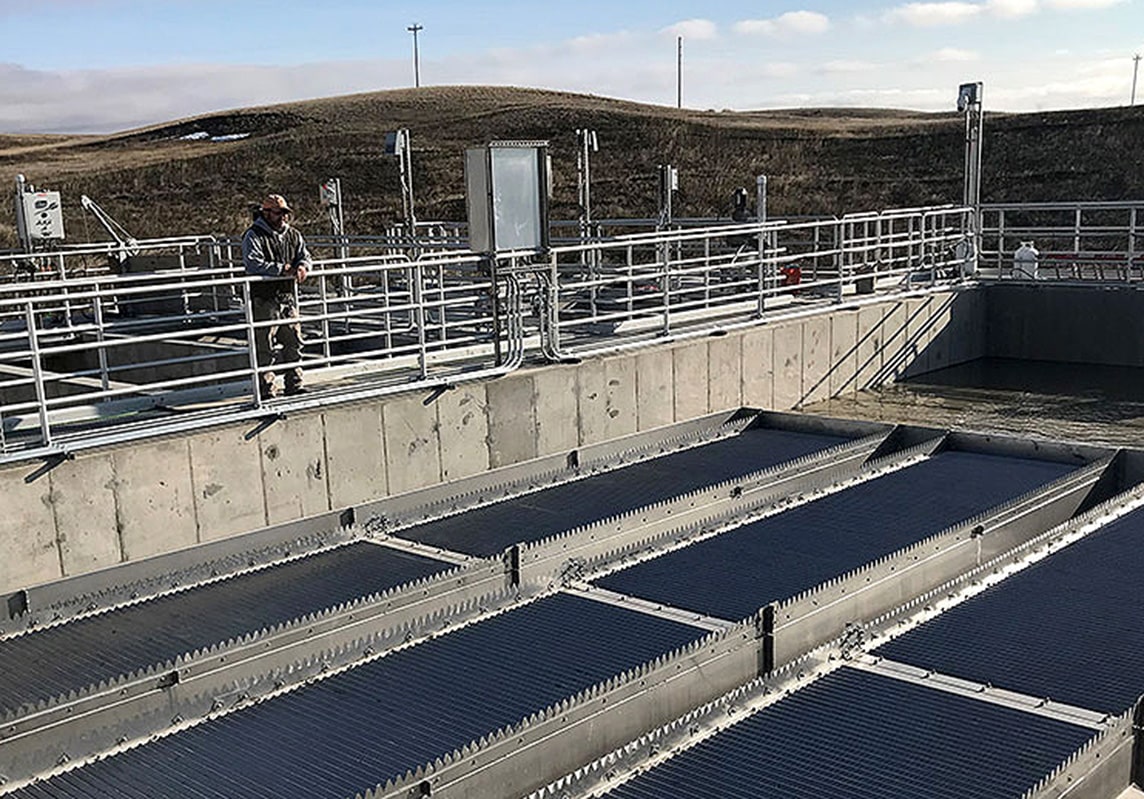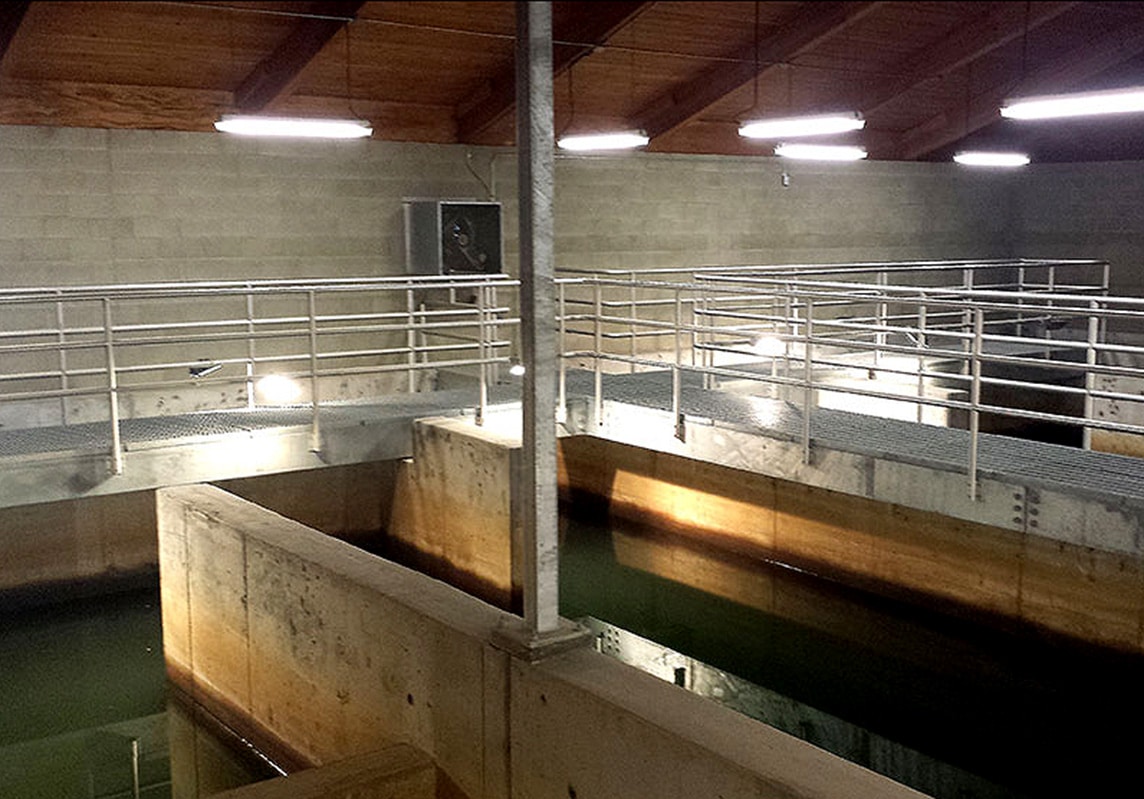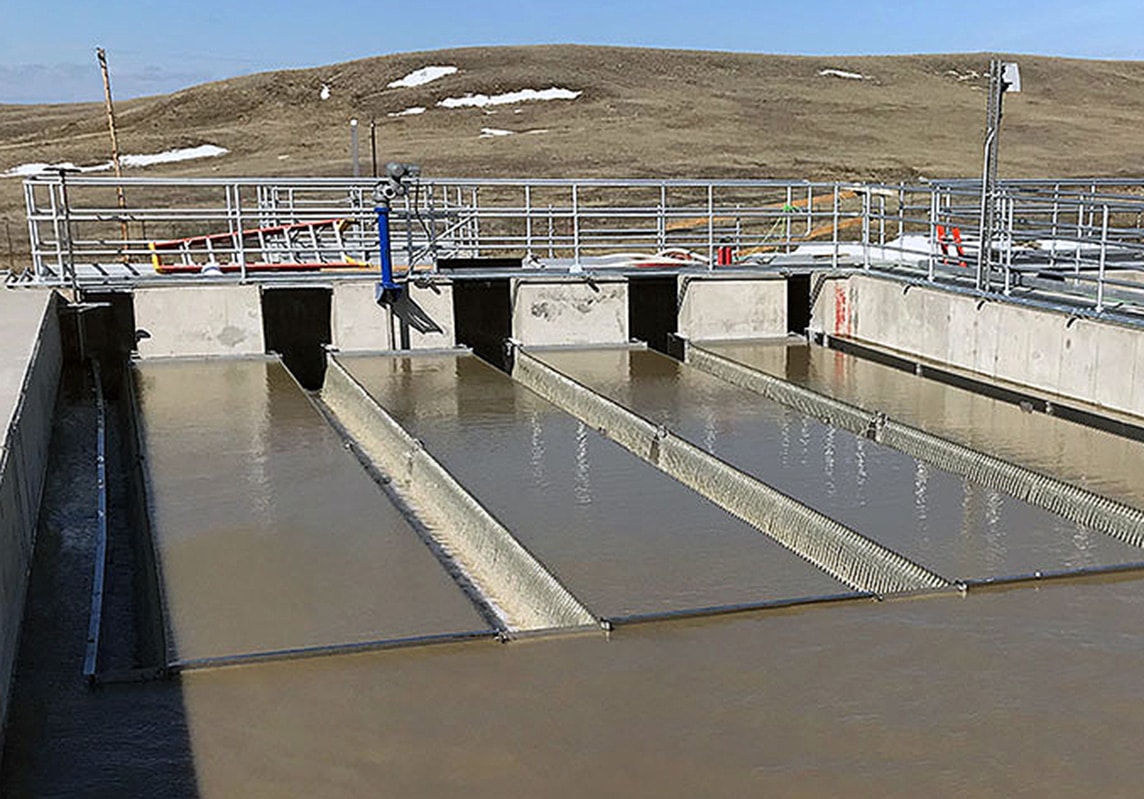

Pre-Sedimentation Solutions and Benefits for Water Treatment Facilities
By Bill Wiegand, PE, and Jeff Ashley, PE
Pre-sedimentation (pre-sed) is an effective water treatment method, often utilized with source waters with high solids, turbidity, and/or organics during certain times of the year, such as spring runoff. The pre-sed process helps reduce these materials from the raw water to more acceptable levels. As a result, other primary treatment processes, such as high-rate settling and filtration, are greatly improved and optimized. Pre-sed systems can be built to site-specific needs to address unique raw water quality in lakes, rivers, and streams.
The pre-sed process can involve fairly simple methods, such as settling ponds where hydraulic retention time is the primary variable used to settle large solids, to more sophisticated processes that can reduce larger amounts of turbidity and organics for volatile source waters. Whatever solution you and your design engineering team decide to use, the end goal is always the same: reduce source water solids, turbidity, and/or organics as economically and sustainably as possible before the water is introduced to the main treatment plant processes.
A well-designed pre-sed process solution typically results in the following three benefits:


1. Operational Flexibility
Implementing a pre-sed process in your water treatment plant will increase flexibility to overall treatment operations. Flexibility will help provide process efficiencies and improve finished water quality. For example, our work on the Fort Peck Water Treatment Plant in Northeast Montana used a pre-sed process primarily utilized for high turbidity during spring runoff but can be taken “off-line” in the winter. This flexibility allows operators to achieve increased filtration efficiency during high turbidity and increased economy when removed from service during low turbidity.
2. Reduced Operating Costs
Everyone wants lower costs. With the correct pre-sed solution designed to meet your users’ needs, it’s possible to reduce operating costs associated with the main treatment processes. How? Pre-sed can improve filter run times, reduce waste/recycle water, and reduce chemical addition. Reduced chemical addition equals lower operating costs.
We observed these benefits on the Fort Peck project when the pre-sed process was brought online. The filter run times increased significantly since the pre-sed basins were capturing the majority of raw water solids and reducing the peaks in turbidity. Increasing filter run times directly affected the number of filter backwash cycles, which resulted in a reduced volume of recycled water wasted. Less backwash pumping, less pumping of recycled water, and less volume of water wasted directly impact cost savings.
3. High Performance Under Extreme Events
An existing treatment plant upgraded with a pre-sed process is more robust even under extreme source water degradations caused by spring runoff, forest fires, drainage basin ground cover loss, and other natural phenomena.
For example, we designed a pre-sed solution for the City of Chinook, Montana, where the Milk River source water experiences very high turbidity peaks during runoff events and sustained organic loads even in the winter months. This pre-sed solution uses a year-round pre-sed process, not only for large turbidity spikes in the unpredictable Milk River but also oxidation of organics on a year-round basis.
Another project that needed this same kind of attention was the Lockwood Montana Water Treatment Plant. The treatment plant realized similar benefits when treating water from the Yellowstone River. In both the Lockwood and Chinook projects, turbidity removal and chemical conditioning occur in the pre-sed basin, which allows the main high-rate clarifiers to act as a polishing process to protect the filters from high turbidity loads. This results in optimized filtration on the Yellowstone and Milk Rivers during spring runoff.


Many Pre-Sedimentation Solutions
As noted above, there are many pre-sed benefits to consider. What is right for one water treatment plant may not work for another. Understanding local conditions and working with an experienced engineer are critical steps to take when considering whether and what pre-sed process would work for your needs. Broadly speaking; however, there are a few approaches to designing a pre-sed system.
Earthen Lagoons
Earthen lagoons allow long detention times (days) for a plant to “wait out” peak solids and turbidity events. Earthen pre-sed lagoons can be economically advantageous because they require less construction time, materials, and design cost. Earthen lagoons can be just as effective as other options with ample space. Some disadvantages of earthen lagoons may include that they require more land. There are also freezing concerns in cold weather conditions and may require additional pumping to fit into an existing plant hydraulic profile.
Other things to consider are short-circuiting through the lagoon, thus shorter detention times, and spring and fall solids turnover for larger lagoons, potentially causing treatment upsets.
Finally, they require more labor-intensive cleaning procedures (usually only annually). Cleaning earthen pre-sed lagoons typically require de-watering and drying the basins over many months, so accumulated solids can be removed. For this reason, earthen lagoon systems are often built in a parallel footprint so one basin can be operational while the other is de-watered for cleaning.
Concrete Basins with Serpentine Channels
These pre-sed basins readily accommodate chemical additions with short detention times (15 – 60 minutes) typically for oxidation. We deployed this option at the above-mentioned Fort Peck Water Treatment Plant. Project owners and the design team had reserved space at the project site for the concrete basins during the preliminary design phase. Sodium permanganate is added to the raw water to oxidize organics and improve filtration performance. After oxidation, a coagulant is added followed by flocculation and high-rate settling for turbidity removal.
Lockwood also uses a serpentine basin with a chemical addition for turbidity removal. Here, sludge settles in the basin and is removed by pumping to waste lagoons twice per year.
Concrete Basin Clarifiers
Depending on specific raw water quality, these systems can remove 50 to 90 percent of turbidity. To manage changing source water conditions, the Fort Peck pre-sed basins included coagulant chemical addition and rapid mixing, followed by flocculation and high-rate settling with inclined plate settlers. Solids captured in the sedimentation basin are conveyed to on-site earthen setting lagoons where the wastewater can be evaporated or land applied.
Ultimately, a well-designed pre-sed system will be responsive to local conditions and needs, but as you can see, many variables come into play when designing a solution and selecting the correction options. Our team at Morrison-Maierle has provided information and design services for various pre-sed systems in Montana.
Let’s talk more about a pre-sedimentation solution for your community’s water system.



